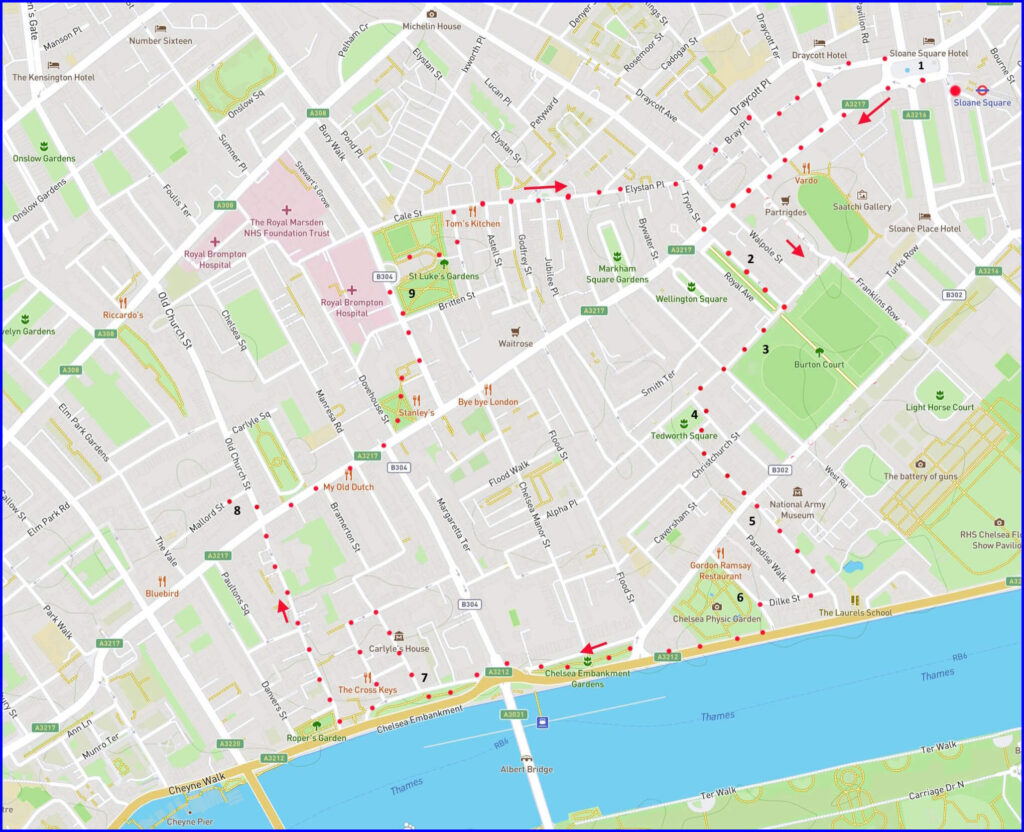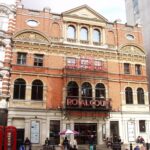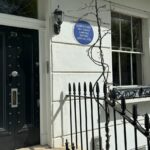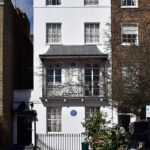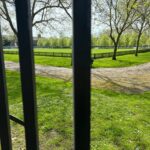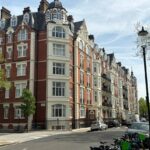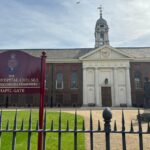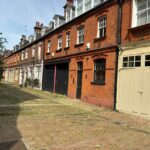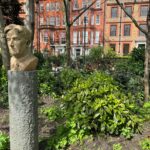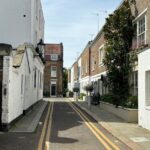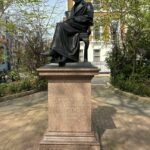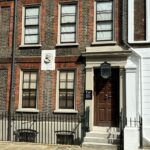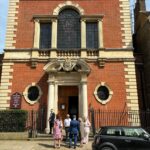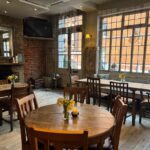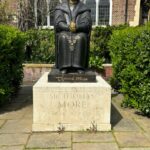An easy walk around Chelsea residential and historical. There is a GPX route file. If you don’t know about GPX, don’t download it until you have viewed this explanatory video. The slide show below charts the walk by side arrows. Click any picture to enlarge. Beneath that are notes on points of interest. [Back to Walks page]
1: Sloane Square
Coming out of the Sloane Square underground you will see the Royal Court theatre behind you on one side of the square – Britain’s first national theatre company
This version of a longstanding theatre in Chelsea was built in 1888 and then called the New Court Theatre. Since the 1950s it has been the home of the English Stage Company who have always pursued a radical and experimental blend of productions. Perhaps this is ironic – if you perceive the Chelsea are as (now) wealthy and conservative more than it is radically fashionable. John Osborne’s 1950s Look Back in Anger is often cited as the early production that set in place a radical intent.
The interior was completely rebuilt in the 1990s – not least because it had become vulnerable to flooding. It continues to thrive – with a reputation for being a “writer’s theatre”
2 Royal Avenue
William III set this up as a way of getting from his Kensington Palace (in Hyde Park) to the Royal Hospital at the other end of the Avenue. it is now dedicated to ex-service personnel, otherwise known as Chelsea Pensioners. This was Christopher Wren’s project except that the link to Kensington Palace never got further than the Kings Road. More details here. In the novels, its the home of James Bond.
The famous Chelsea Drugstore was once at the corner of the Avenue (its now a McDonalds)
Not only fictional characters living here – also some celebrities. For instance there is a blue plaque for one of my favourite film directors (Joseph Losey) at number 29. His film The Servant looks as if it was filmed in a house like this – perhaps it was (although I think it was a house nearby). Some of his Clockwork Orange was also filmed here.
But also the Avenue has been home to Dante Gabriel Rossetti and Petula Clark (not at the same time of course).
3 Bram Stoker House
At 18 St Leonard’s Terrace was the home of the Dracula author from 1878. He came up with the idea here – after a bad dream with “nightmarish crabs” in it. However, he lived in several Chelsea places including 27 Cheyne Walk further on this walk
4 Tedworth Square
This is one of those patches of greenery very common in the Chelsea area – they look an attractive place to pause and rest but they are exclusive to the people who live nearby. In this case the square has had some quite famous residents. Notably Mark Twain at number 23. The square is named after a town in Hampshire.
This is a free museum – covering what it says. Open daily: 10am to 5.30pm (Last admission: 5pm) Open until 8pm on the first Wednesday of every month. Closed: 25, 26 December and 1 January. Unlike many such museums it is not concerned with a particular branch or regiment but was conceived for the the army more generally in the 1950s. It had a major overhaul and recently (2017) reopened.
6 Chelsea Physic Garden
The Garden is open to the public (details here). It was founded in 1673 as a site for the cultivation of medicines. After the Oxford botanical garden its the oldest in Britain. It also has the largest olive tree in Britain – and a tree growing grapefruit. The surrounding walls help with heat retention. The main entrance is is Swan Walk (the east boundary) . More information here. Then you have a short stroll on the Chelsea Embankment – learn more about its history here.
7 Chelsea intellectuals
This particular corner of Chelsea has been home to a number of distinguished scholars and artists. Such as (opposite) Dante Gabriel Rossetti, and Thomas Carlyle. And Thomas Moore – He who opposed the protestant movement, resisted Henry VIII divorce and got venerated by the catholic church. Moore built a house in Chelsea in what is now Beaufort Street. Henry VIII would visit him there.
8 No 13 Malard Street
This is a slight diversion from the main route. The interest is that it was the home of Winnie the Pooh author A.A. Milne. He moved here after army discharge in 1919 and stayed for the rest of his life
9 St Luke’s Church
The church is pleasantly situated in a green square a short walk beyond the farmers market. It was built in the 19th century under the “commissioners churches” scheme – designed to give more capacity to expanding population areas. Charles Dickens was married there
